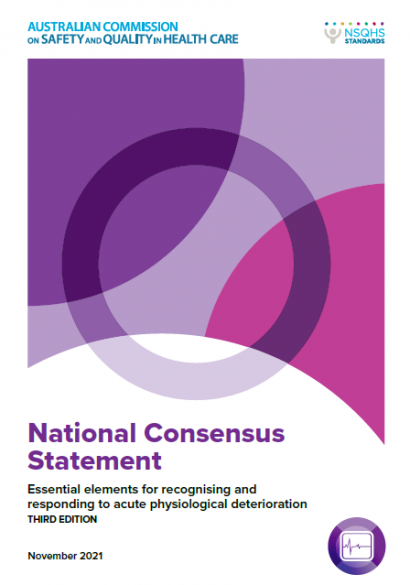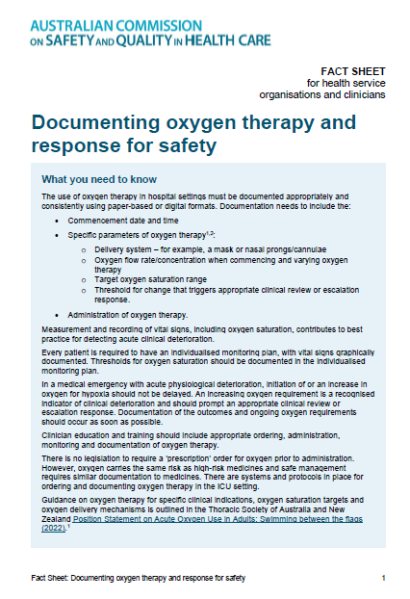NSQHS 8 Recognising
National Consensus Statement: Essential elements for recognising and responding to acute physiological deterioration
The National Consensus Statement: Essential elements for recognising and responding to acute physiological deterioration sets out the agreed practice for recognising and responding to acute physiological deterioration. It was developed as a generic document that applies to all patients in all acute care facilities in Australia.
Contents
The 2021 National Consensus Statement outlines the:
- Importance of providing safe and high-quality care to patients who deteriorate in hospitals
- Clinical processes required to recognise these patients, and respond to them appropriately
- Organisational systems required to ensure that patients who deteriorate are recognised and responded to.
The third edition of the Consensus Statement includes an increased emphasis on the importance of determining the reason for deterioration, including forming, testing, communicating, managing and documenting provisional and differential diagnoses.
Resources
Guidance for health service organisations and clinicians on processes to support appropriate documentation around the administration, and monitoring of oxygen therapy for adults in acute healthcare settings is provided in the fact sheet.
This resource is an addendum to the National Consensus Statement and complements the Commission’s Chronic Obstructive Pulmonary Disease (COPD) Clinical Care Standard, which includes specific guidance on the use of oxygen and ventilatory support during COPD exacerbations in acute healthcare settings.
A comprehensive Guide to Support Implementation of the National Consensus Statement helps health service providers to identify strategies for successfully implementing robust recognition and response systems.
The previously published Quick-Start Guides developed to support the implementation of the National Consensus Statement: Essential elements for recognising and responding to acute physiological deterioration have been archived. These Guides referenced an earlier version of the Consensus Statement, which is now in its third edition.
If you have any queries regarding the removal of these resources or require support, please contact the Comprehensive Care and Communicating for Safety Team at Comm4Safety.CompCare@safetyandquality.gov.au


